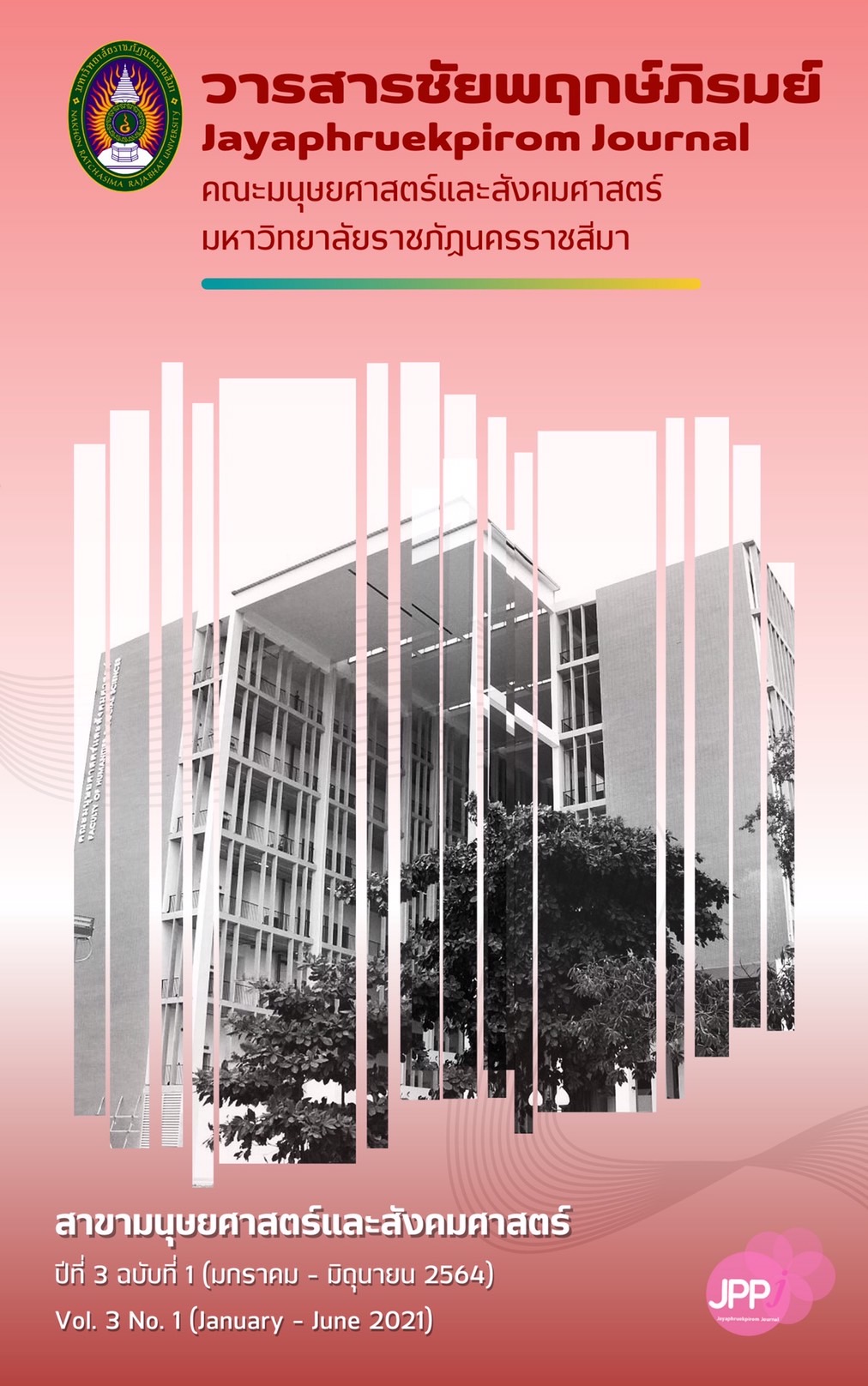CONCEPTS IN CREATIVE PRODUCT DESIGN FOR PROMOTE WISDOM FROM THE STUCCO OF PETCHABURI SCHOOOL
Keywords:
Wisdom, Creativity, Design, Stucco WorkAbstract
This research is a combination of qualitative and quantitative research which the objectives are 1. To study and analyze the folk wisdom of the Muang Phet stucco work in Phetchaburi Province 2. To present creative product design concepts that promote awareness of the Muang Phetchaburi stucco work. with methods that still maintain the folk wisdom and style of stucco work. The data were collected by interviewing 2 groups of key informants: 1. Stucco Experts in Phetchaburi Province 2. Marketing Specialist and Product Designer which used a semi-structured interview with both groups. The area of question including the concept of using stucco folk wisdom to design products, a form of communication and learning folk wisdom from stucco work, and all any other’s aspect and opinion. After that, quantitative research was used to examine the conclusions of such product design concepts with a questionnaire with the third group of informants, namely, the target group of product concepts that are Thai people (Gen Y and Gen Z) aged between 18-40 years. The results suggest that the concept of creative product design (D.I.Y.) can create awareness about the folk wisdom of stucco work in Phetchaburi Province which stucco products that can be utilized, for example, for decoration. Including the preservation of stucco folk wisdom in Phetchaburi province. It was found that creative product design concepts were beneficial to conservation. Stucco Folk Wisdom of Phetchaburi can create sentimental value because it is a D.I.Y. work and adds value by bringing fresh stucco to design products. which contributes to job creation and generate income locally.
References
จิตตรา มาคะผล และคณะ. (2563). การพัฒนาเส้นทางการท่องเที่ยวเพื่อการเรียนรู้งานศิลปกรรมปูนปั้น
เมืองเพชร. วารสารศิลปากรศึกษาศาสตร์วิจัย, 12(1).
ทองร่วง เอมโอษฐ์. (สัมภาษณ์, 30 ตุลาคม 2564).
ปวริศร์ โชติพงษ์วิวัฒิ, (2560). วิเคราะห์ปรัชญาการศึกษาพิพัฒนาการนิยม. วารสารศึกษาศาสตร์ มมร. คณะ
ศึกษาศาสตร์ มหาวิทยาลัยมหามกุฎราชวิทยาลัย, 5(2).
พรพิมล พจนาพิมล, ดนุลดา จามจุรี, มนัส บุญประกอบ และคณะ. (2559). การพัฒนารูปแบบการจัดการเรียนรู้
เพื่อเสริมสร้างการคิดสร้างสรรค์อย่างมีวิจารณญาณ สำหรับนิสิตสาขาวิชาการออกแบบทัศนศิลป์. วารสาร
ศิลปากรศึกษาศาสตร์วิจัย, 9(1).
มานิตย์ อาษานอก. (2561). การบูรณาการกระบวนการคิดเชิงออกแบบเพื่อพัฒนานวัตกรรมการจัดการเรียนรู้.
วารสารเทคโนโลยีและสื่อสารการศึกษา คณะศึกษาศาสตร์ มหาวิทยาลัยมหาสารคาม, 1(1).
วัฒนธรรมจังหวัดเพชรบุรี, สำนักงาน. (2562). งานปูนปั้นสกุลช่างเมืองเพชร. สืบค้นเมื่อ 24 พฤศจิกายน
, จาก https://www.m-culture.go.th/phetchaburi/ewt_dl_link.php?nid=985
Dewey, John. (2014). Technology and Engineering Teacher; Reston, 74(1), pp. 24-27.
Wolf, Marco & Mcquitty, Shaun. (2011). Understanding the do-it-yourself consumer: DIY
motivations and outcomes. Article of Academy of Marketing Science Review,
pp. 154-170.


